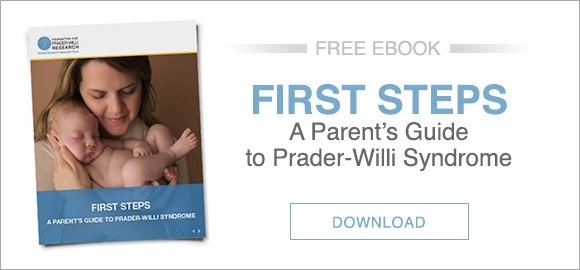Below is a link to recently published paper from Dr. Francke's group at Stanford Univ. You might recall that Dr. Francke received an FPWR grant in the first funding cycle (2003), and the work in this publication was supported by those funds.
My summary of the article may seem confusing, because it is. Basically we know that inactivation of the PWS critical region on chromosome 15 leads to PWS, but there are several genes/regulatory RNAs in that region and it is still not clear exactly which one(s) have to be inactivated to lead to the PWS characteristics (the PWS phenotype, as it's called). Defining exactly which part of the PWS region is responsible for the phenotype is very important; and this remains an area of active investigation, differing opinions, and discussion.
Dr. Francke favors the hypothesis that inactivation of a particular group of regulatory RNAs (snoRNA85) is the underlying cause of PWS, but this remains to be formally proven. A nearby cluster of regulatory RNAs (snoRNA52) is also usually inactivated in PWS and is deleted in the PWS mouse models, so it might also contribute to the PWS phenotype. In this paper, the investigators try to rule out the snoRNA52 as the cause of PWS. They study a different mouse model, which has a deletion that is close the mouse PWS region, but these mice don't have the mouse PWS characteristics (which is to say, they don't die shortly after birth). So, by that definition, they are not 'PWS mice'. When Dr. Francke's group characterized the deletion in this mouse model very carefully, they determined that the snoRNA52 cluster is deleted, but the snoRNA85 cluster is still present. They then use a reverse argument --- since the snoRNA52 cluster is gone, and the mice live without problems, the deletion of the sno52RNAs cannot be responsible for the PWS characteristics. This supports (but does not absolutely prove) their hypothesis that the sno85 RNA cluster is really responsible. They indicate their strategy to formally prove this at the end of the paper to take the PWS mouse, add back sno85 (by crossing it with a transgenic mouse that has an extra copy of sno85) and see if they can 'rescue' the mouse (ie, show that those offspring do not have PWS phenotype). If they are able to show beyond a doubt that the sno85RNA are responsible for the PWS phenotype, it would be a very big step forward, allowing the research to focus on understanding and manipulating this particular regulatory sequence.
Lack of Pwcr1/MBII-85 snoRNA is critical for neonatal lethality in Prader-Willi syndrome mouse models. Ding F, Prints Y, Dhar MS, Johnson DK, Garnacho-Montero C, Nicholls RD, Francke U. Mamm Genome. 16(6):424-31, 2005.








